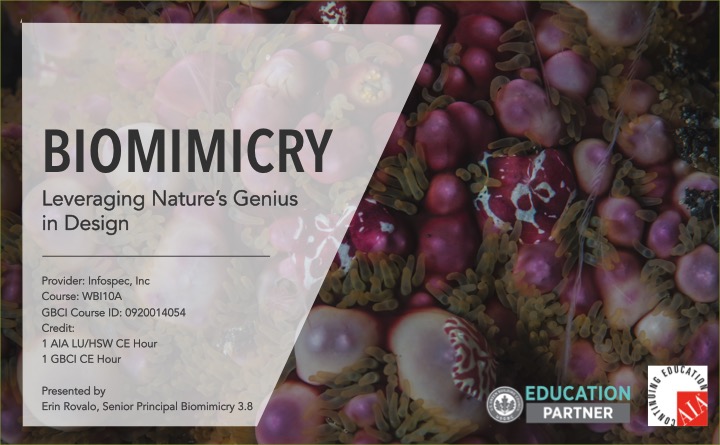How to Get Started in Biomimicry Design
Erin Rovalo, Biomimicry 3.8 Senior Principal
Looking for a way to bring biomimicry into your work or next project? This is the post for you! The Biomimicry Thinking methodology is a step-by-step outline of how to bring biomimicry specific activities to a typical design process. It outlines the experiential aspects of actually doing biomimicry.
Insights from nature can bring new ways of working, collaborating, and viewing your challenge at hand. Many find that introducing inspiration from nature into the design process is a way to invigorate the creative problem solving process and bring a hopeful outlook on tough sustainability challenges.
Getting outside shifts the design conversation into unexpected idea territories
Working with biomimicry can include in-depth research to cover ideas across taxa (from amoeba to zebra, as we like to say). It can also include simply getting outside with a team and key set of inquiries. The good news is that the natural world offers so much for the design process—from new ideas to shifting us from left- to right-brained thinking to triggering creativity and more—that finding opportunities to bring nature to the design table is sure to add value.
Building A nature inspired design culture
There are a variety of ways to create a design culture that incorporates reverence and awe for the natural world to create not only more sustainability-forward solutions, but also a process and result that leans in to the human-nature connection.
Here are a few prompts to think about how to promote a biomimicry design experience in your next project— the 8 hallmarks of biomimetic design.
How might we..?
Upgrade a meeting by going outside
Ask the right questions before proposing answers, then "How would nature do that?"
Broaden the solution space with intel from biology
Bring a biologist into our team work
Quiet our cleverness
Shift our design goals from "sustainable" to "well-adapted"
Embrace dynamic non-equilibrium (i.e. embrace change!)
Create conditions conducive to life
Ready to unpack these prompts a bit more? Watch the full webinar where Erin goes through the opportunities in more detail and other insights on how biomimicry can influence a design process.
Watch full webinar
In this recorded webinar done in partnership with GreenCE, Biomimicry 3.8 Senior Principal Erin Rovalo captures eight hallmarks of working with nature's genius as part of the design process.
Access is easy. Enter your email to reveal the webinar player below.
Amplify The Signal
Help spread biomimicry thinking to designers and creative problem solvers everywhere.
Love To Design With Nature In Mind?
Take our introductory self-paced online course and start building your foundation in the philosophy and practice of biomimicry.





